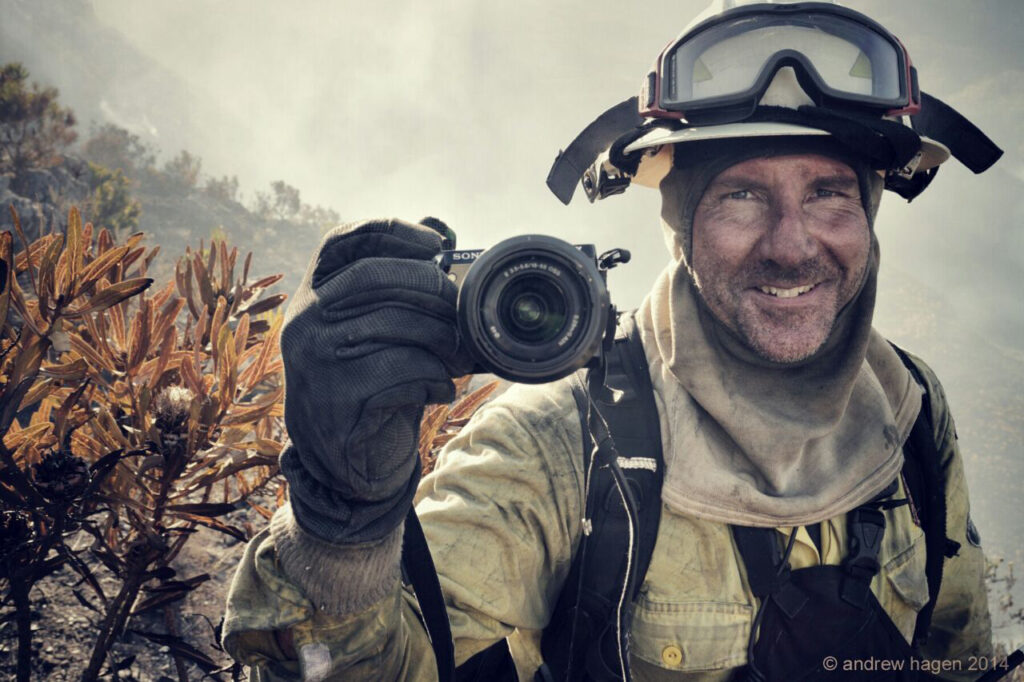Wildfires pose a growing threat in South Africa, particularly in high-risk areas such as Simon’s Town, Newlands and Hout Bay in the Cape Peninsula, and along the southern coastline in towns such as Wilderness, Groot Brakrivier, The Crags and Knysna. The combination of strong winds, dry vegetation, and climate change fuelling these extreme conditions has made these fires increasingly difficult to control, resulting in widespread destruction when a fire impacts and urban environment.

In a discussion with Patrick Ryan, a wildfire practitioner and innovator at Vulcan Wildfire Management, we explored the lessons learned from past wildfires, the gaps in risk mitigation, and how the insurance industry can play a role in improving wildfire resilience.
A Passion for wildfire management – Patrick Ryan’s journey into wildfire management began over a decade ago when he volunteered for the Volunteer Wildfire Services. Recognising the need for specialised ground crews, he and a colleague launched South Africa’s first specialist wildland firefighting ground crew. Modelled after highly trained crews in Australia, the United States, and Europe, these teams are equipped to operate in remote areas, make command decisions, and even use controlled burns, termed ‘Burn Outs’ or ‘Back Burns’ to suppress fires.
Through Vulcan Wildfire, Patrick has expanded his work into wildfire consulting, assisting insurance companies, conducting risk assessments for homeowners, developing innovative tools for assessing risk, and providing specialised training in wildfire suppression and incident management.
The Knysna fires: Key lessons learned – The devastating Knysna fires highlighted critical failures in wildfire preparedness and response. Patrick notes that while extensive research and reports were produced in the aftermath, many of the key lessons have yet to be fully implemented. Some of the most important takeaways include:
- Collaboration and coordination: Different organisations involved in wildfire response, including government agencies, fire services, and insurance companies, often struggle to work together effectively. Political and funding challenges create barriers to efficient disaster management.
- Homeowner responsibility: When revisiting Knysna years after the fires, Patrick observed that many homeowners had rebuilt in the same high-risk manner without incorporating fire-resistant designs or materials.
- Lack of funding for fire management: Unlike other pressing societal issues such as housing and education, wildfire preparedness receives limited funding, despite its potential for catastrophic damage.
- Evacuation planning: During the Knysna fires, emergency planners had anticipated directing people away from fire zones. However, with fires surrounding the town, residents found themselves trapped, underscoring the need for more flexible and comprehensive evacuation strategies and a better use of modelling to determine choke points and the flow of people in a Wildland Urban Interface landscape.
The role of insurance in wildfire risk mitigation – One of the biggest concerns in high-risk wildfire areas is that homeowners are often rebuilding without addressing underlying vulnerabilities. Patrick suggests that insurers have a significant role to play in reducing wildfire risks through:
- Incentivising fire-resistant construction: Homeowners who incorporate fire-resistant materials and designs into their properties should receive insurance incentives, much like how security measures lower crime-related premiums.
- Risk-based premium adjustments: Policies should reflect the actual wildfire risk of an area, which can be determined using risk assessment tools, encouraging property owners to take mitigation measures seriously.
- Education and awareness: Insurers should work with wildfire specialists to educate homeowners, municipalities, and developers on best practices for reducing wildfire hazards.
The expanding wildfire threat and urbanisation – As cities expand and more people build homes on the outskirts of urban areas, the risk of wildfires increases. Areas such as Stellenbosch, Franschhoek, and Somerset West are seeing rapid development along mountainous, vegetation-rich zones. Without proper fire management, these regions could experience catastrophic losses in the event of a wildfire.
Key wildfire risk factors include:
- Proximity to high-vegetation areas: Homes built near forests, shrublands, or plantations are at higher risk.
- Lack of vegetation management: Many homeowners do not clear dry vegetation around their properties, which can act as fuel for fires.
- Poor building design: Houses built with vulnerabilities such flammable materials or without ember-resistant features are significantly more vulnerable.
A Call for greater collaboration – While some conversations between wildfire experts and insurers have taken place, Patrick believes more structured collaboration is needed. He suggests that town planners, property developers, insurers, and wildfire specialists work together to implement risk-reducing policies.
One potential solution is the introduction of a wildfire risk rating system for properties, similar to home security assessments. This would allow insurers to offer tailored recommendations and incentives based on a property’s wildfire resilience.

Cutting-edge technology to grow & adapt with you
PROFIDA will meet your needs, both now & on our journey together into the future
Climate change and the future of wildfire management – With climate change leading to more extreme weather conditions, South Africa will likely experience an increase in the number and ferocity of Extreme Wildfire Events. Fire services are already stretched thin, and in many cases, they are simply unable to control fires that spread under extreme wind conditions.
Patrick highlights that in California, insurance companies have started pulling out of high-risk wildfire areas, leaving homeowners unable to secure coverage. South Africa should take proactive measures to prevent a similar crisis. By integrating risk mitigation strategies into insurance models, encouraging responsible urban development, and promoting public awareness, the country can better prepare for the growing wildfire threat.
Wildfires are an unavoidable reality in fire-prone regions, but their impact can be significantly reduced with proactive management. The insurance industry has the power to drive meaningful change by encouraging fire-resistant construction, supporting community risk management programs, and integrating wildfire risk assessments into policy underwriting.
The conversation around wildfire preparedness needs to extend beyond the firefighting community. With insurers, property developers, town planners, and homeowners all playing a role, South Africa can build a more resilient future against the growing threat of wildfires.

